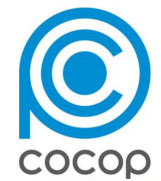Coordinating Optimisation of Complex Industrial Processes (COCOP)
Research area Innovation and education in the digital society | Antonius Johannes Schröder | Dr. Michael Kohlgrüber | Beata Lewandowska
The vision of the COCOP project is: Complex process industry plants are op-timally run by the operators with the guidance of a coordinating, real-time optimisation system. COCOP will combine the technological development with a social innovation process of co-creation and co-development.

European Union - Horizon 2020

SPIRE EU (Sustainable Process Industry through Resource and Energy Efficiency)
COCOP is based on optimizing complex plant-wide processes: for this purpose, the overall problem is broken down into individual, process section-related, individual problems and their solutions are coordinated into a plant-wide optimization solution (software solution). This will enable users to understand the function of the operation as a whole - including the areas that are beyond their control. This will enable them to make better decisions within their process section.
COCOP will combine technical development with a process of social innovation based on the two pillars of co-creation and co-development to increase the effectiveness and impact of the innovations and to increase user acceptance.
- Tampere University of Technology (coordinator)
- DSM Chemical Technology R & D B.V.
- SIDENOR Aceros Especiales S.L.
- IDENER
- MSi Grupo (Mondragon Sistemas De Informacion Sociedad Cooperativa)
- OptimationAB
- Outotec Oy
- Tecnalia
- Dortmund University of Technology (Social Research Center Dortmund)
- VDEh-Betriebsforschungsinstitut GmbH
- VTT Technical Research Centre of Finland
- 2-control ApS
The objective is to define, design and implement a procedure that integrates and optimizes existing industrial control systems and efficient data management and optimization processes, thus developing integrated control and monitoring procedures for larger industrial production processes.
Technical Objectives The technical solution will be a software system that can be integrated with existing DCS (Distributed Control Systems). This can be broken down into the following technical objectives:
- Requirements and system architecture
- Algorithms for optimization, data management, and state estimation.
- Predictive process and sustainability models
- Prototype implementation and user acceptance
Environmental goals The goal is to increase the sustainability of the process industry, i.e., reduce pollution, greenhouse gas emissions, and energy/commodity consumption, and be better prepared to meet existing and new regulatory requirements related to environmental, quality, and safety aspects.
Business goals
- Reduce operating costs through optimal performance of processes, enabling a reduction in energy and raw material consumption, number of defects/rejects, etc.
- Increase in productivity
Social goals
- Improving the working conditions of plant operators by developing new process control tools that support the work by providing new opportunities for process control. Learning and skills development will also be addressed.
- Strengthening the social and human development perspective by integrating the designed technological innovation into a concept of a social innovation process. The development process is integrated into a broader business strategy. This is done by involving all relevant stakeholders and end users, and by considering implementation and impact at the very beginning of the process.
- The competitiveness of the European process and automation industry is to be strengthened, leading to the preservation of jobs, exportable, high-quality IT products for industry and the corresponding jobs, and prosperity in Europe.
The project is divided into seven work packages. The operational work packages (2-6) are dedicated to an iterative technological development and improvement process. While work packages 3,4 and 5 run in parallel and are iteratively interconnected, work packages 2 and 6 represent sequential phases: prerequisites (WP2) at the beginning of the project, ongoing co-creation processes and final validation (WP6) during the technological development process.
WP1. Management The work package includes the tasks of managing the administrative, technical and financial aspects of the project, tracking the compliance of ongoing works with the overall project plan, monitoring the available resources and schedule to ensure a high overall quality of the project results.
WP2. Requirements This work package will define use cases, system requirements, the criteria for assessing the impact of the project, and the requirements for the work of collaborators and co-creation processes.
WP3. Architecture includes the software architecture for the system to be developed:
- Develop a generic architecture for the software system.
- Define data models, storage, interfaces and data flows for the system.
- Define data processing methods.
WP4. Modeling
- Develop simulation models for the use cases
- Provide guidelines for modeling work that apply to processes outside of the use cases
- Demonstrate implementation of the development tool
- Define online sustainability indicators
WP5. Optimization and Implementation
- Define sub-processes and the coordination of optimization problems for all use cases
- Implement the software system by implementing selected methods
WP6 Co-creation, Verification & Validation
- Ensure the support of the system users and their participation via co-creation
- Test the software system
- Provide estimates for the usefulness of the system
WP7. Communication, dissemination and exploitation
- Ensure maximum impact of the COCOP project through effective communication, dissemination, exploitation and IPR activities; also to develop a structure to ensure continuity of COCOP after the end of the project.
- Assess the feasibility of transferring COCOP concepts and developments. Two levels are addressed: 1) transferability within a sector involved in the project; 2) transferability to other sectors outside the COCOP project.
Click here for the COCOP homepage




![[Translate to English:] [Translate to English:]](/storages/zentraler_bilderpool/_processed_/a/f/csm_Kontakt_b86e8d8ecc.png)
![[Translate to English:] [Translate to English:]](/storages/sfs-sowi/_processed_/6/c/csm_Glasfront_sfs_Header_eae6d325d3.jpg)
